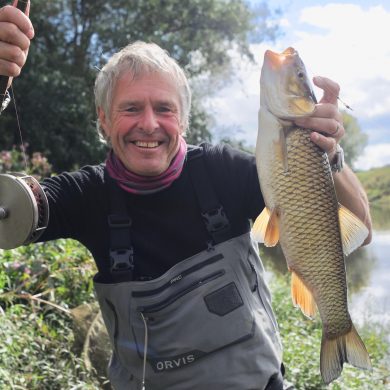Source: Atlantic Salmon Federation
One month ago, on January 10, 2015, the Norwegian coast was hit by a hurricane. After the storm, the first sport fishermen in the fjords near the west coast city of Bergen got a nasty surprise. Schools of farmed steelhead (sea run rainbow trout) escaped from damaged fish farms were visible from the surface. They were so numerous, NRK national news, reported the fjords of Western Norway were boiling with farmed rainbow trout on the run.
The sports fishermen immediately realized that these non-native steelhead were a potent threat to the few wild Atlantic salmon left in Norway. They could see many were ready to spawn and were determined to eliminate them before they could do incalculable damage by digging up river gravel where fragile wild Atlantic salmon eggs were incubating.
Initial estimates of tens of thousands of escapees, escalated to over 120,000. The fishermen went very public. There were warnings not to eat the farm fish, that they contained de-lousing drugs. This rapidly became political, since Norway had just announced a zero-escape farm salmon policy.
It was then that an extraordinary thing happened. The Askøy Hunter & Fisherman’s Association, alarmed by the horribly sick appearance of the steelhead, sent samples to Dr. Are Nylund, a leading salmon disease scientist based at the University of Bergen.
“All of the fish that I analyzed were very sick,” reported Nylund to the Norwegian newspaper BA Bergensavisen. It was Nylund and his team who tracked the ISA virus from Norway into Chile where it caused $2 billion in damages killing millions of farmed salmon.
The Norwegian government, slow to respond to the massive escape, was very quick to discourage public disease testing, asking people to only use the “official” labs. A government spokesperson noted that just because the dreaded salmon pancreas disease, spreading through Norwegian salmon farms was detected in the escaped steelhead did not mean the fish were sick. However, she failed to capture the concern.
The issue was not whether the farm fish were sick, but could they infect the fragile wild salmon populations with viruses they carry. There are only about 500,000 wild Atlantic salmon left in Norway. This is less than half the fish often found in a single farm and .01% of the entire Norwegian farmed salmon population.
On January 29, 2015, Ola Borten Moe, leader of the Centre Party, suggested it was time for Norway to waive the high cost of salmon farm licences for any salmon farm established on land. He suggested this would protect Norway’s environment, stimulate innovation, solve the industry’s escalating disease and lice problems and increase job opportuities across the country. This was quickly echoed by Norwegian Green Party representative Kristin Mørch, “Aquaculture is causing massive destruction and operates large-scale animal cruelty. Change can no longer be refused, restructure is going to push forward whether you want to or not… yes, to farming, but not at the expense of the environment and animal welfare.”
Norway is the cradle of the salmon farming industry, it was born there, the head offices are there. When Norwegian politicians declare it is time to move the industry into closed tanks, perhaps it really is time.
In an open letter Norwegian sport fishermen have asked their Minister of Fisheries to resign.

